Recent years have been marked by a significant increase in what most would consider extreme weather events. 2023 has been particularly brutal with record setting temperatures, wild fire smoke, and warming ocean surface waters. A warming atmosphere holds more moisture, and this has lead to a global rise in catastrophic flooding. Catastrophic flooding can test our resilience like nothing else. While no one can control Mother Nature's fury, we can equip ourselves with the knowledge to outsmart her wrath. Here's a comprehensive guide to help you prepare and survive catastrophic flooding.
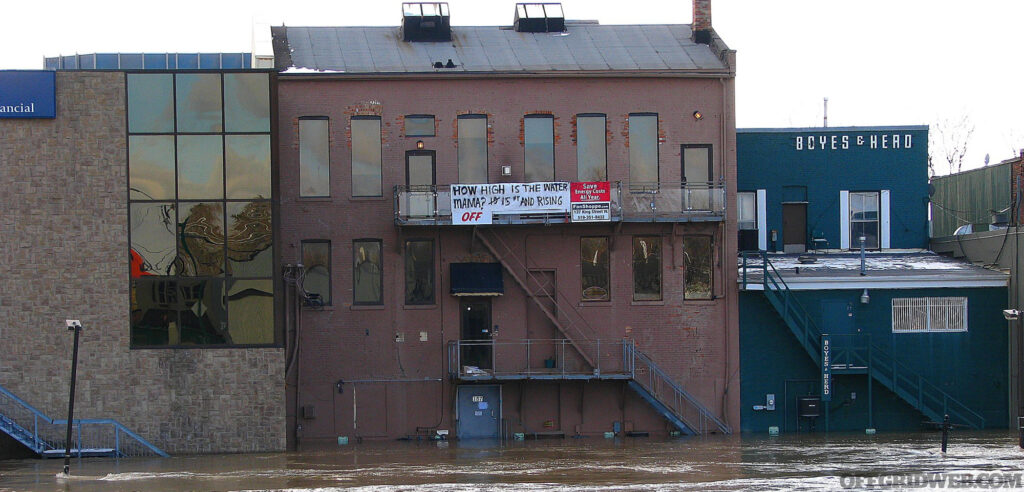
Above: Much of the urban infrastructure in the United States is not sufficient to deal with the massive increase in precipitation we are now coping with.
Floods can be truly devastating, wiping out homes, damaging infrastructure, and sadly claiming lives. This makes it essential to know what to do when you suspect a major flood is imminent. From making early preparations to ensuring your safety during the event, and the following survival tips can help you navigate such a disaster. Watch the video below and continue on to learn even more lifesaving tips.
Preparation is crucial. Start by gathering essential supplies and keep them in an emergency preparedness kit. Items like, like water, non-perishable food, first-aid kit, flashlights, and a battery-operated radio could be the difference between life and death. Keep these items in an easily accessible location, ideally in a waterproof container. You may also want to prepare a go bag with important documents, cash, and medication, in case an evacuation becomes necessary. Another great prep to make is having a dedicated early warning system like a Midland NOAA Weather Radio that will alert you to danger before you become irreversibly caught in it.
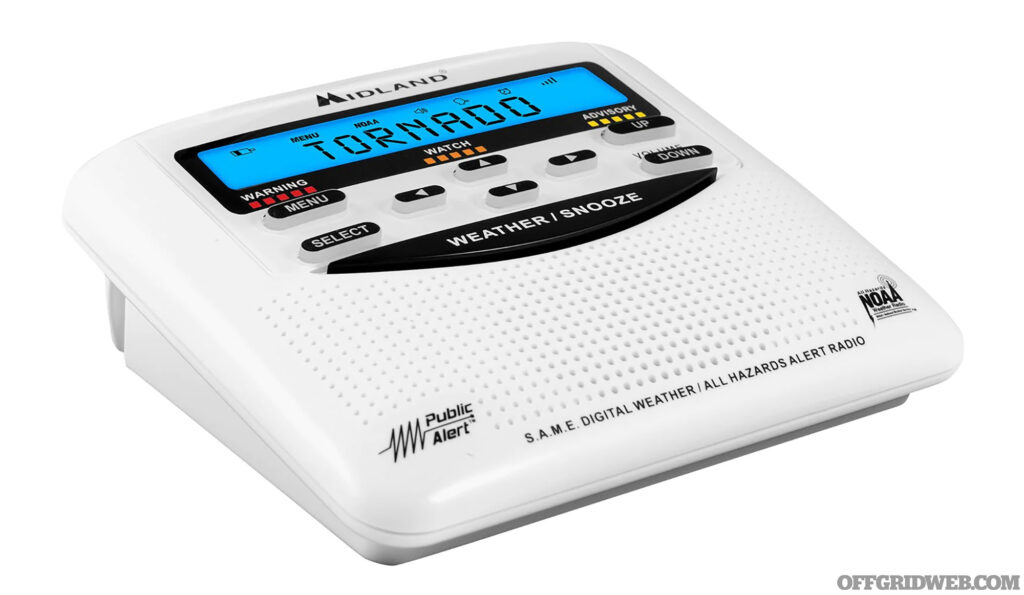
Above: This is a low-cost early warning system that could potentially save your life and lives of your loved ones.
Next, assess your home. If it’s possible, consider installing flood barriers or flood shields to protect your property from water damage. Always keep gutters and drains clean to ensure proper water flow. It's also wise to safeguard your home by elevating critical utilities, such as the electrical panel, water heater, and major appliances. Taking these steps can be expensive, so if constructing or installing preventative measures is not an option, at least knowing where the weaknesses are will make you more situationally aware in an emergency.
Above: Survival legend Les Stroud shares important survival tips for a flooded home.
Understanding the local flood risk is paramount. Keep a close eye on weather reports and stay informed about the situation in your area. Consider signing up for community alert systems for real-time updates. If you live in a high-risk flood zone, consider having a safe evacuation plan. Remember, it's safer to evacuate early than to wait until the last minute. Once a flood warning is issued, focus on ensuring your safety. Turn off utilities at the main switches and unplug electrical items to prevent potential electrical shock. Don’t forget to move valuable items to higher levels of your home, but only if you have enough time available to do so.
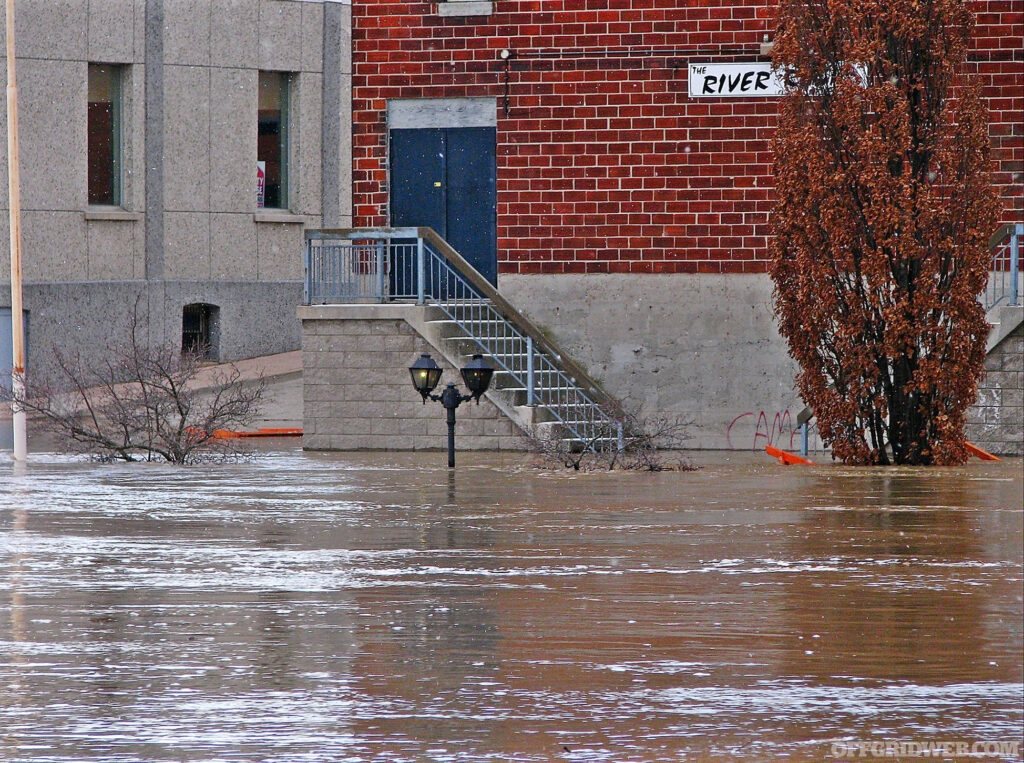
Above: Flood waters can rise rapidly, get to an elevated area from which you can escape from. Avoid becoming trapped in an attic or other restricted space.
During the flood, prioritize personal safety over possessions. If the water starts to rise inside your home, move to the highest level but avoid enclosed attics to prevent becoming trapped by rising floodwater. Always avoid walking or driving through floodwaters. It takes just 6 inches of moving water to knock an adult off their feet, and 12 inches to move most vehicles. After the floodwaters recede, be cautious while returning home. Fast moving water can make buildings and roadways unstable, or expose things like high voltage lines or gas and sewage pipes. Check for structural damage before entering any building and be mindful of potential electrical hazards.
Above: One of the most dangerous situations during a flood is getting stranded in a vehicle.
Being prepared for catastrophic floods involves careful planning, maintaining a keen eye on the weather, securing your home, and knowing when and how to evacuate. Having some simple items in place, and knowing what to do in the event of a flood event may help keep you level headed long enough to survive the worst.
Related Posts
- Survival Scenarios: Facing a Flash Flood
- Flood-Chaser Documents Flash Floods on Video
- Some of United States' Most Significant Floods
- Raging Waters
- National Advisory: Surviving a Catastrophic Power Outage
Related Posts

“Survivalist” Manhunt: Craig Caudill's Insights Of a Fugitive on the RunSurvival expert Craig Caudill provides insights regarding the Pennsylvania manhunt for escaped inmate, Michael Burham.
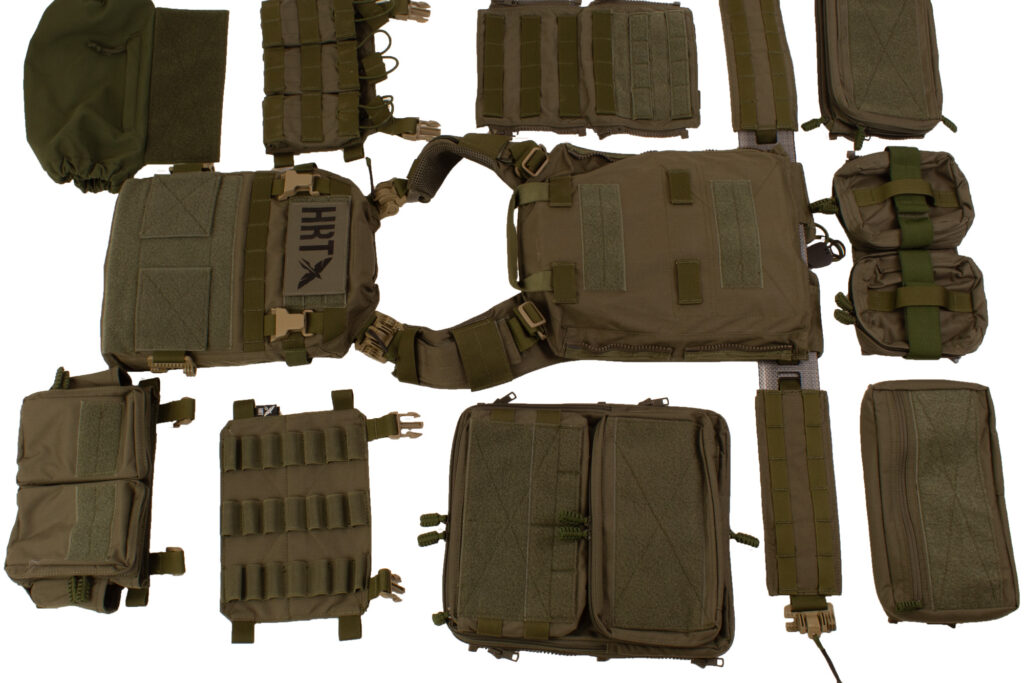
HRT LBAC Plate Carrier: The Evolution of Body ArmorLearn how the Load Bearing Adaptive Carrier (LBAC) by HRT revolutionizes tactical gear for enhanced mobility and protection.

Unsolicited Smartwatches: Potential Threats and How to RespondMilitary have reported receiving unsolicited smartwatches in a potential brushing scheme. Learn what to do if you become the target.

Bug Out Bag List of EssentialsThis bug out bag list of essential gear can help you and your family become better prepared for a variety of emergency situations.

Run to the Hills: What to Consider Before Moving to the CountryEscaping the chaos of the city by moving to the country is an appealing prospect for many, but there are several important things to consider.

Survival Botany: Six Lifesaving Plant SpeciesSurvival botany can save your life in an emergency. Here we cover six of the most common edible plants in North America.
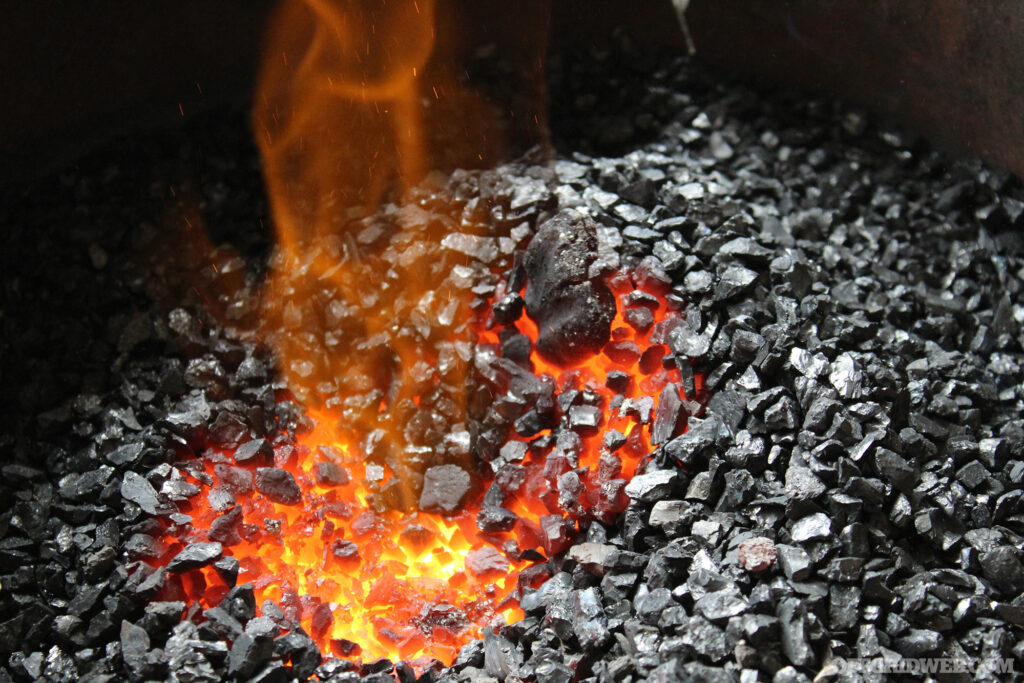
Learn How To Build Your Own ForgeCreate what you need, when you need it, by learning the basics of how to build your own blacksmithing forge.

eMergency Transportation: eBikes Are For More Than Just Going GreenMotor assisted pedaling is great during the good times, but how do eBikes hold up during the worst? We use the QuietKat Warrior to find out.

Indigenous Knowledge: How Four Children Survived the Amazon for 40 DaysFour Colombian children survived in the Amazon for 40 days. Here's what we can learn from their remarkable story.
The post Crucial Steps to Survive Catastrophic Flooding appeared first on RECOIL OFFGRID.
By: Patrick Diedrich
Title: Crucial Steps to Survive Catastrophic Flooding
Sourced From: www.offgridweb.com/survival/crucial-steps-to-survive-catastrophic-flooding/
Published Date: Tue, 18 Jul 2023 18:56:34 +0000
-------------------------------------------------------------------------
 CampingSurvivalistHuntingFishingExploringHikingPrivacy PolicyTerms And Conditions
CampingSurvivalistHuntingFishingExploringHikingPrivacy PolicyTerms And Conditions
